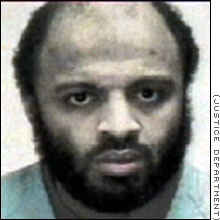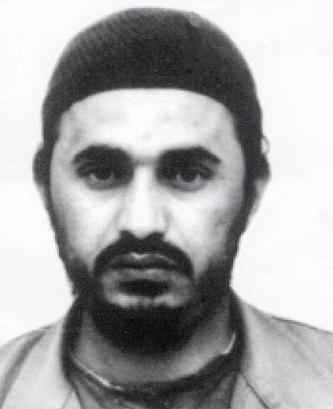|
Nick Berg
"Nothing in his life became him like the leaving it; he died as one that had been studied in his death to throw away the dearest thing he owed, as 't were a careless trifle."When Shakespeare wrote those lines about the thane of Cawdor, he was referring to a character so inconsequential to the plot of Macbeth that he never even appears on stage. The saga of Nick Berg is a different kind of story. Although nothing in his life became him like the leaving it, his gory decapitation was front-page news. More people have witnessed the death of Nick Berg than of any single man since John F. Kennedy. An American businessman taken hostage in Iraq and killed by Abu Musab al-Zarqawi, Berg's death was captured on videotape and became the center of an overnight conspiracy sensation. Armchair decapitators critiqued the video in tiresome detail, and thousands of pimply-faced teenagers sitting in their lonely rooms posted their knowledgeable viewpoints on what a decapitation ought to look like. In the view of these experienced professionals, Berg's death was clearly a CIA hoax, possibly pulled off with the assistance of the Mossad.
In February 2002, Wall Street Journal reporter Daniel Pearl was decapitated by top al Qaeda leader Khalid Shaikh Mohammed on a videotape subsequently released over the Internet. Due to an over-enthusiastic editor and technical problems during filming, the video wasn't as horrific as you might expect. The Berg video, which surfaced in early 2004, was a much more effective presentation. Although the production values were skimpy compared to the Pearl video, the actual beheading was presented much more effectively: a simple head-on perspective accompanied by the blood-curdling screams of the assassins. The video was released shortly after the Abu Ghraib prison abuse scandal became public, and it was initially characterized as revenge for the humiliating images of Iraqi prisoners suffering at the hands of American soldiers.
Concurrently with these revelations, about a million bloggers and BBS participants began questioning every detail of the video. Some claimed Berg was wearing an orange jumpsuit of the type issued to prisoners at Abu Ghraib (he wasn't). Others claimed he was sitting in a chair that also appeared in some of the prison abuse pictures (he wasn't). Still others claimed the walls of the room where Berg was executed were the same color as the walls at Abu Ghraib (they weren't). Many viewers of the tape critiqued the actual beheading, arguing there wasn't enough blood or that Berg didn't struggle appropriately. These observations were virtually meaningless in light of the low quality of the video. Even if Berg had been sedated or killed before being beheaded, that was hardly proof of a vast conspiracy. Nevertheless, the speculation flew thick and furious. The most popular opinion among clueless Internet dwellers was that the execution was some sort of CIA disinformation operation, although the tape offered no imaginable benefit to the CIA. However, even paranoids have enemies. Despite the abundance of irresponsible speculation, the case of Nicholas Berg was indeed strange. And suspicious. No, really! Even as the mainstream media abandoned the story, turned off by the conspiracy loonies, a few isolated stories emerged that raised really big questions about who this guy was and what he was doing in Iraq.
Somehow or other, Moussaoui obtained Berg's password for the University of Oklahoma computer network. The official story put forward by the Justice Department is that Berg innocently shared his password with Moussaoui on the bus, but that there were no other connections between them. While barely within the realm of possibility, it's pretty difficult to swallow this version of events. Nice Jewish boy meets radical Islamic extremist on the bus, and they hit it off so well that he turns over his computer password? Come on!
It only gets weirder from there. When Berg was being held in Iraq, for reasons which remain unknown, the FBI had questioned him at some length about whether he knew how to make pipe bombs. The reason for this didn't emerge until several months after his death, when a Philadelphia television station reported that Berg might have been a suspect in a 2000 bombing spree in that city (where he lived before going to Oklahoma for college). Unfortunately, the story of Nick Berg has cooled off considerably in the months since his death, in part because his execution was only the first in a string of deadly decapitations recorded by Iraqi terrorist videographers. No one has followed up on the Moussaoui connections in months, and none of the national media picked up on the Philly TV report. Whatever the truth turns out to be, one thing is painfully clear: There is more to the story of Nick Berg than meets the eye. Ironically, the people who were screeching the loudest about the "Nick Berg conspiracy" may have helped bury the story, since Berg's name became inextricably linked with looney tinfoil-hat fodder within weeks of his death, often the kiss of death as far as any future investigations by the serious media. Who was Nick Berg? Was he just a very unlucky guy whose karma sent him continually into the paths of terrorists? Or was he something more than he seemed? As Shakespeare would have put it, "There's no art to find the mind's construction in the face."
|
 More serious-minded observers had questions when then-Attorney General
More serious-minded observers had questions when then-Attorney General  The plot thickened quickly, however. Initially described as a U.S. contractor, Berg was subsequently discovered to be an independent businessman. His reasons for being in Iraq were extremely vague. Then it turned out that he had been imprisoned by Iraqi authorities shortly before his kidnapping. Then it turned out that the
The plot thickened quickly, however. Initially described as a U.S. contractor, Berg was subsequently discovered to be an independent businessman. His reasons for being in Iraq were extremely vague. Then it turned out that he had been imprisoned by Iraqi authorities shortly before his kidnapping. Then it turned out that the  Berg's trip to Iraq wasn't his first encounter with a terrorist, and it wasn't the first time he was interrogated by the FBI. In 2000, when Berg was attended college in Norman, OK, he apparently just happened to run into a certified al Qaeda terrorist while riding the bus.
Berg's trip to Iraq wasn't his first encounter with a terrorist, and it wasn't the first time he was interrogated by the FBI. In 2000, when Berg was attended college in Norman, OK, he apparently just happened to run into a certified al Qaeda terrorist while riding the bus.  It gets worse. Moussaoui was also reportedly tied to Abu Musab al-Zarqawi—Berg's future executioner. Before coming to the U.S., Moussaoui had lived in London, where he attended a radical Islamic mosque tied to Zarqawi's international terrorist network. The Zarqawi group reportedly maintained active cells in London as well. Furthermore, Moussaoui had been researching materials for a possible chemical weapons attack, and chemical weapons are a Zarqawi specialty.
It gets worse. Moussaoui was also reportedly tied to Abu Musab al-Zarqawi—Berg's future executioner. Before coming to the U.S., Moussaoui had lived in London, where he attended a radical Islamic mosque tied to Zarqawi's international terrorist network. The Zarqawi group reportedly maintained active cells in London as well. Furthermore, Moussaoui had been researching materials for a possible chemical weapons attack, and chemical weapons are a Zarqawi specialty.